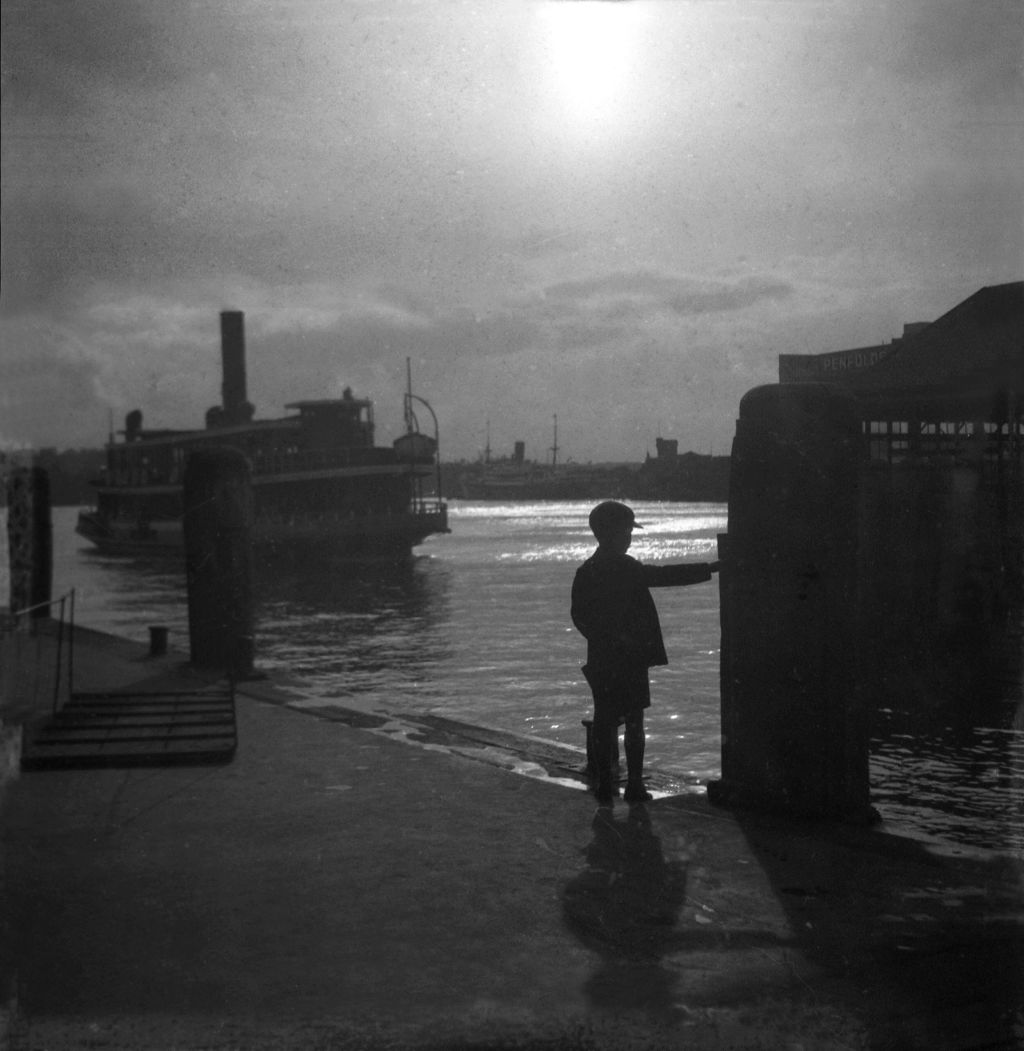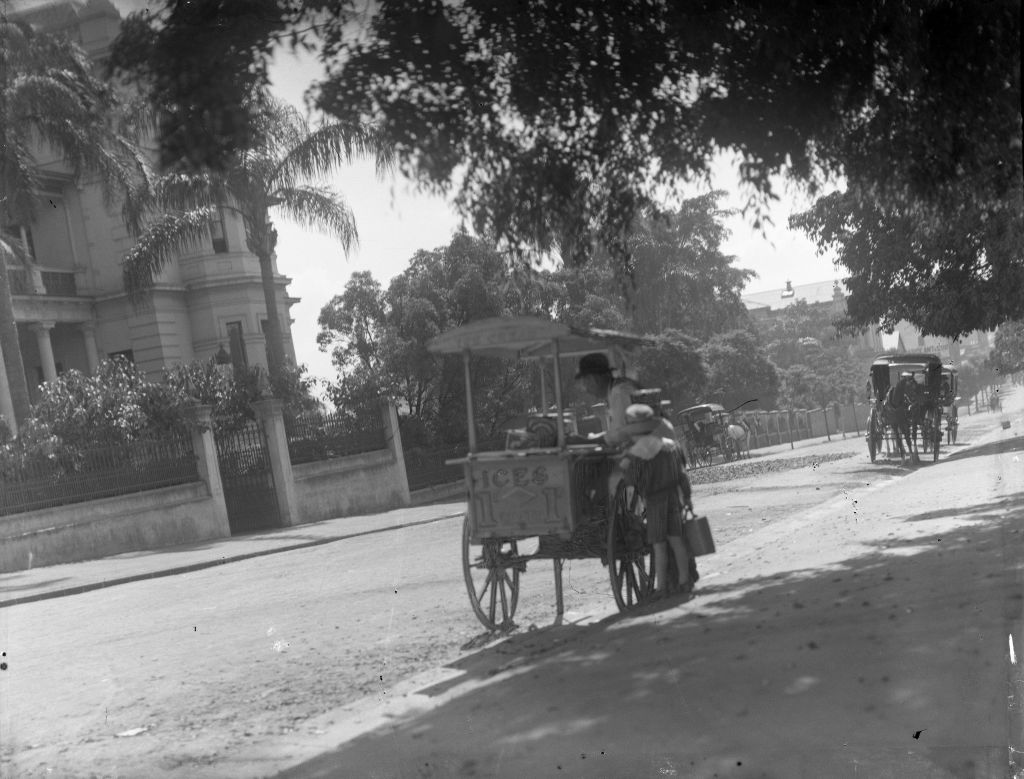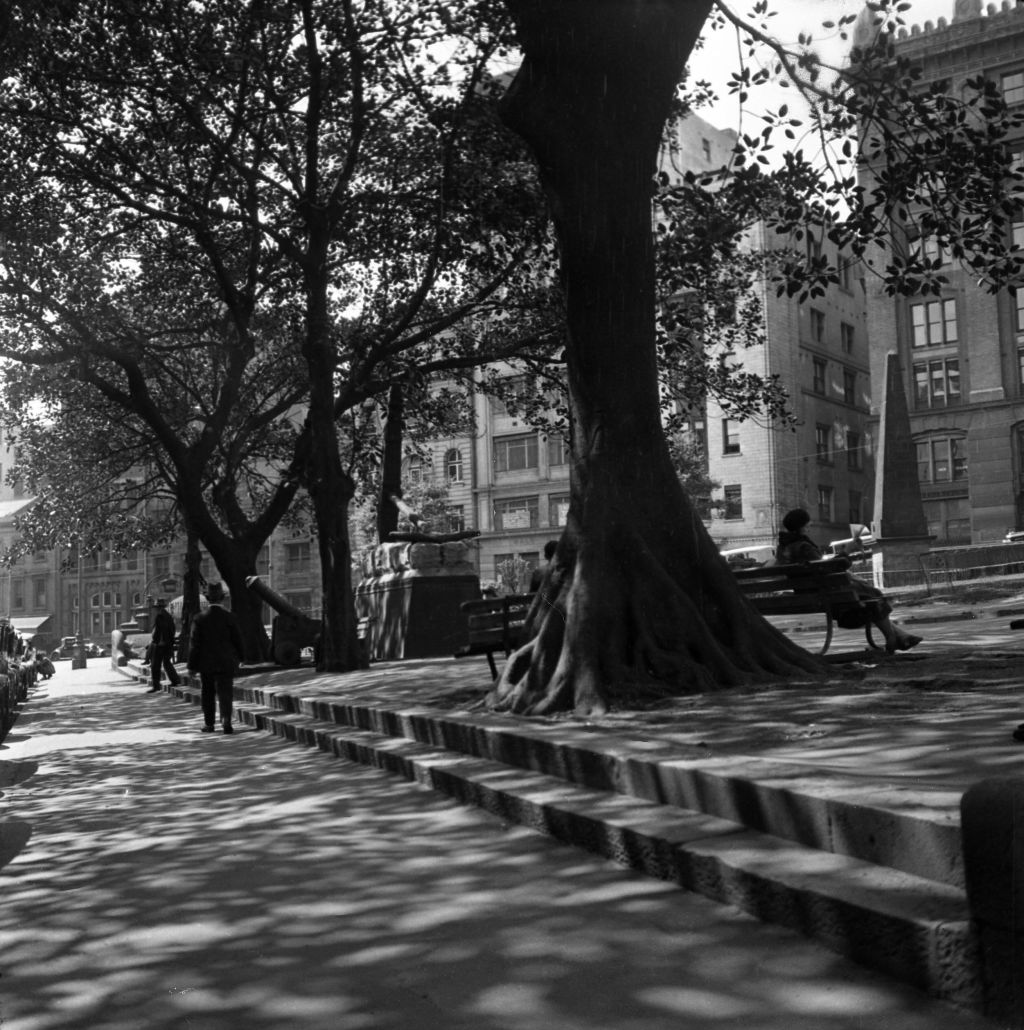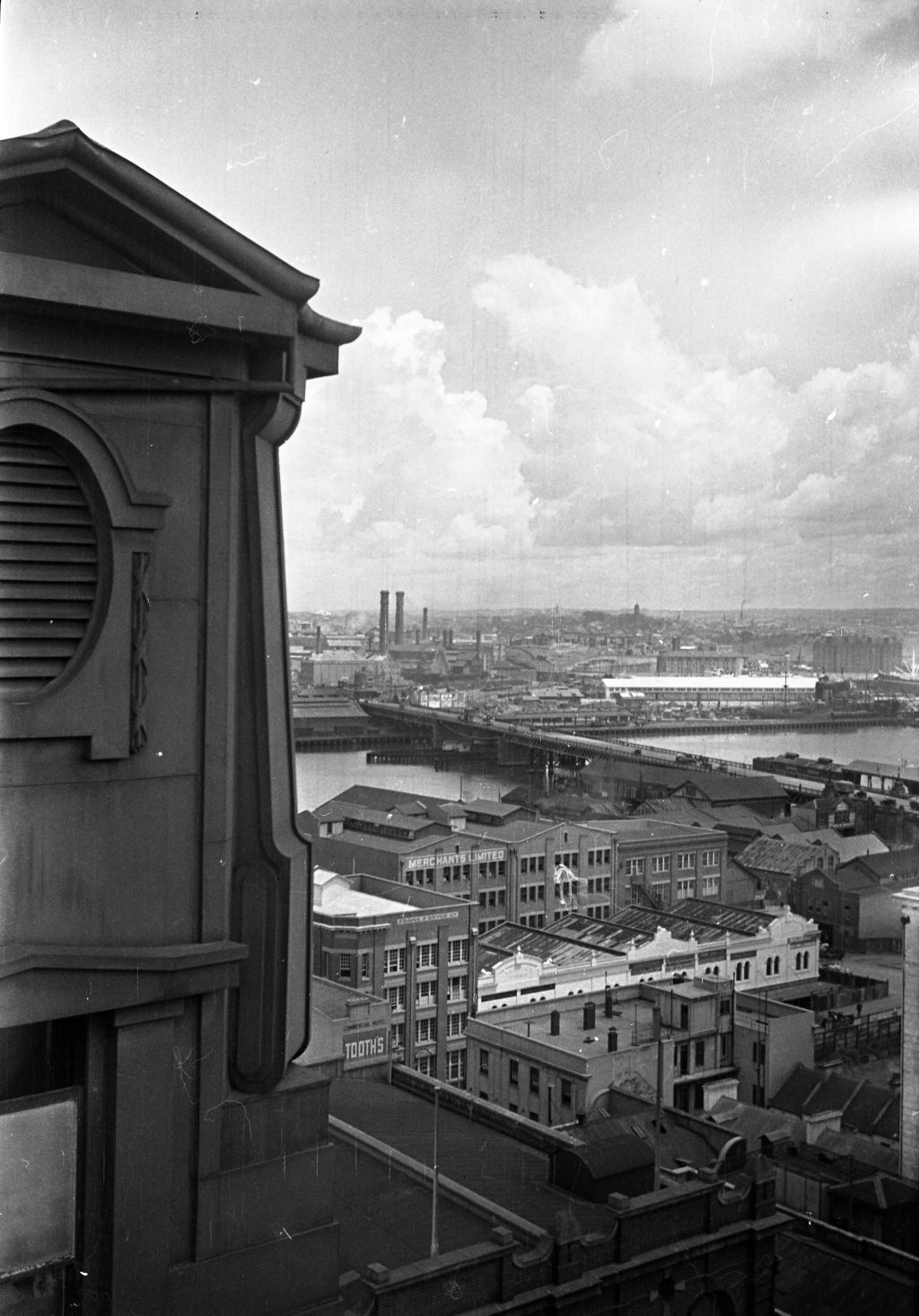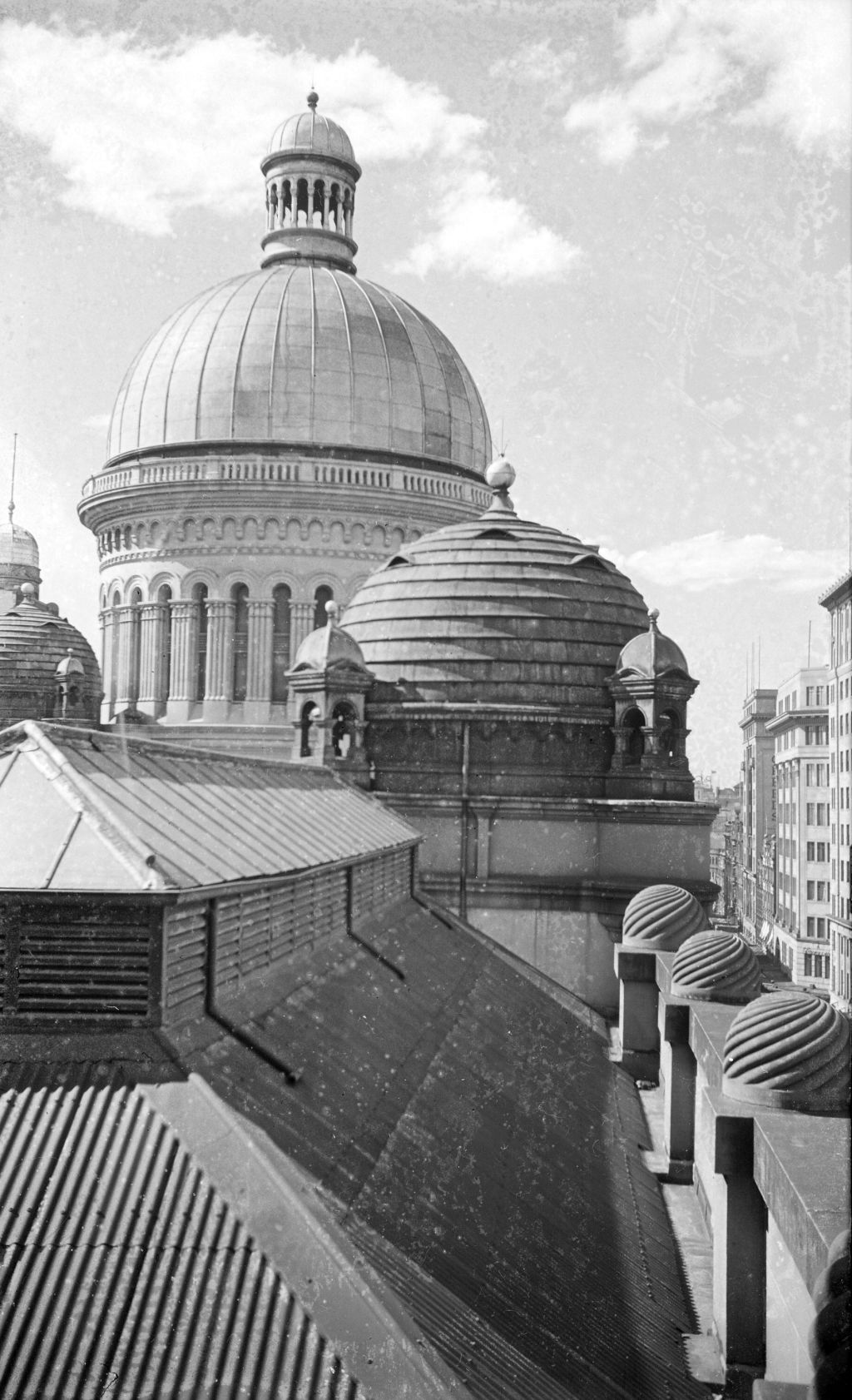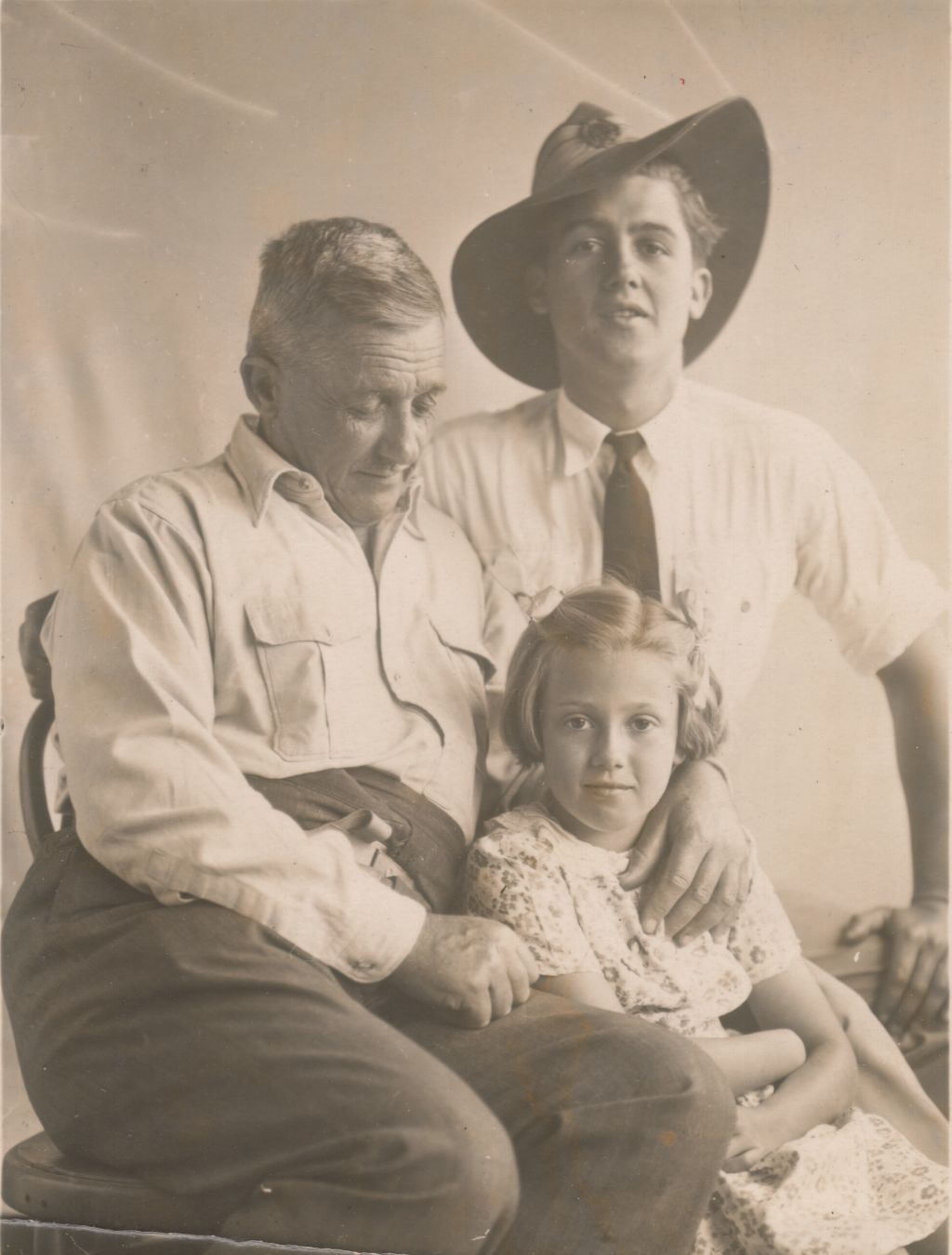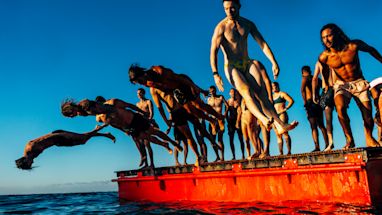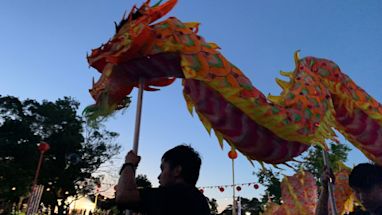These captures of Sydney life come from Adam Forrest Grant, who lensed local scenes from the 1920s to the 1940s.
Working as a City electrical engineer from 1908 until he passed away in 1948, Mr Grant was a founding member of the Photographic Society of NSW. He was also friends with Harold Cazneaux, a noted Australian photographer.
Mr Grant’s family gifted the photos to the people of Sydney in 2013.
Mr Grant’s daughter, Jenny Grant, said her father’s photographs featured views of the old city skyline from atop the Queen Victoria Building where he worked.They also include industrial and architectural scenes from suburbs such as Darlinghurst, Pyrmont and Millers Point.
“They were all stored under my brother David’s house and when he died 2 years ago, his daughter Helen found them all indexed and mainly in good condition. I believe the City’s archives people fell about with excitement because there were pictures of old Sydney between the wars, and some buildings that no longer exist,” Ms Grant said.
The archives people have done a fantastic restoration job and I am so grateful to them.
“I know Dad would be very pleased and proud. Dad’s pictures are very atmospheric, very calm, and show his interest in light and shade. But Dad was also a very modest man and I think that stillness comes out in his pictures.
“The photograph I love the most is one of Macquarie Place. I worked for a shipping company called Swire & Yuill and I used to trudge past there to get the bus home, and I always thought how charming it was. Now this photograph has turned up and I think it’s one of his nicest, so I feel he must have liked it too.”
Ms Grant said her father spent much of his time in his, “little fibro cubbyhole” darkroom at their home in Bellevue Hill, in Sydney’s eastern suburbs. There he printed films taken on his plate, Vogtlander twin-lens reflex and concertina folding cameras.
“I was only 12 when he died and I was just getting to the stage where I was thinking that photography was rather interesting,” Ms Grant said.
“We had a wonderful session where he showed me how to develop and print, which was great fun.
“You also have to remember that when you’re dealing with a plate camera, you don’t muck about, because if you haven’t got an awful lot of money, you don’t waste plates. It’s not like a digital camera – you can’t fire it off in all directions and pick the best one. You have to be very careful what you do and be sure what you’re photographing is exactly what you want.”
To see more of the collection, visit City of Sydney Archives.
Published 29 August 2013, updated 12 July 2024
